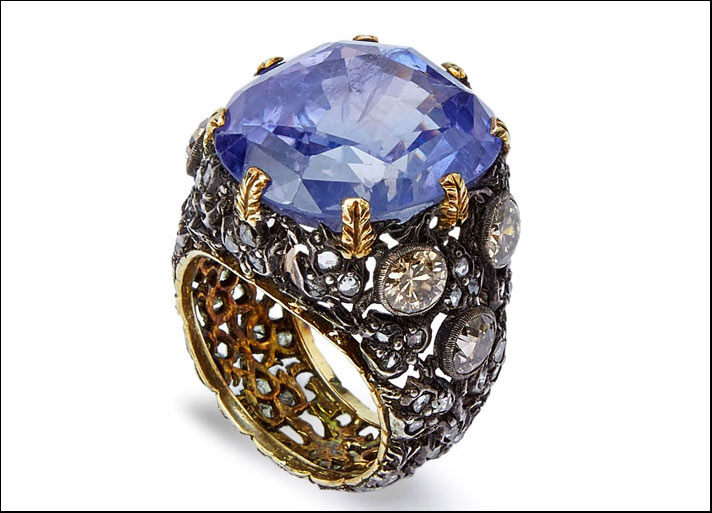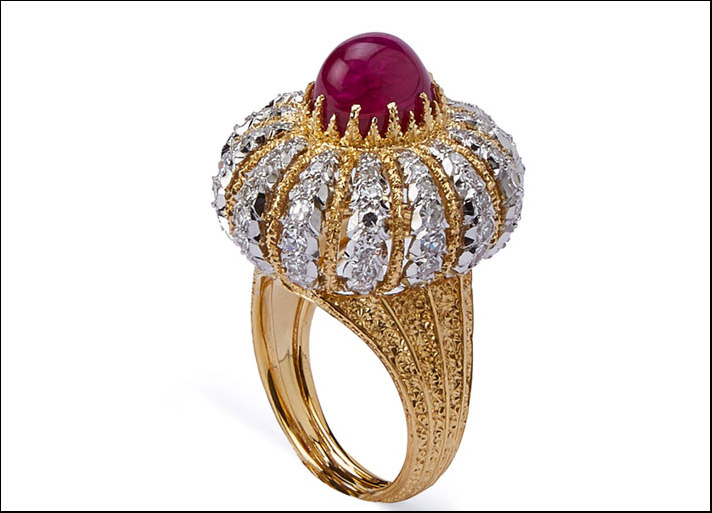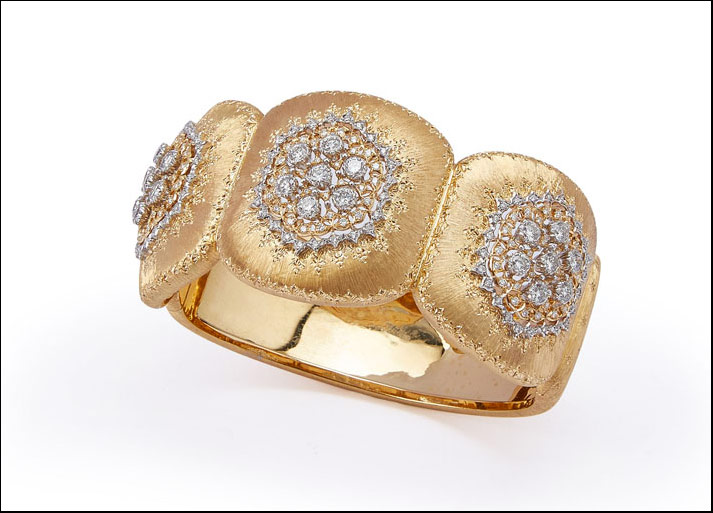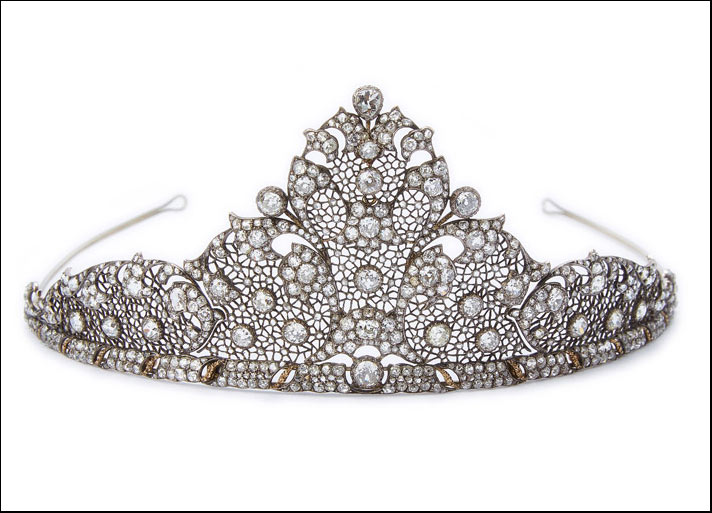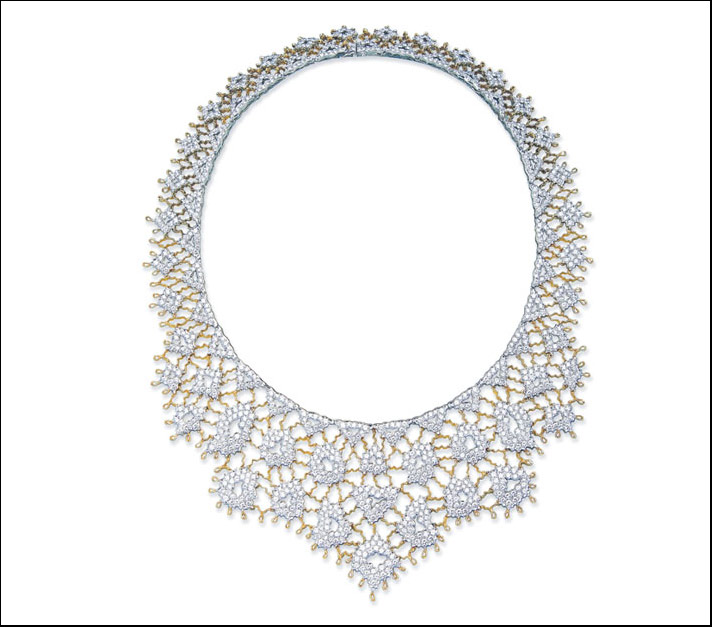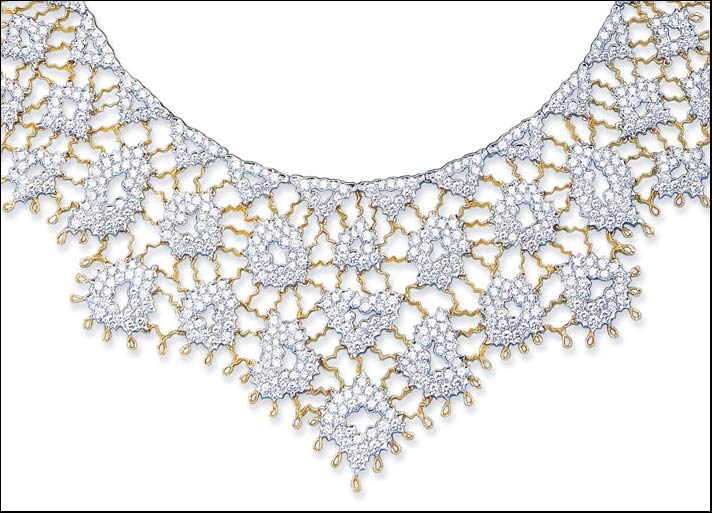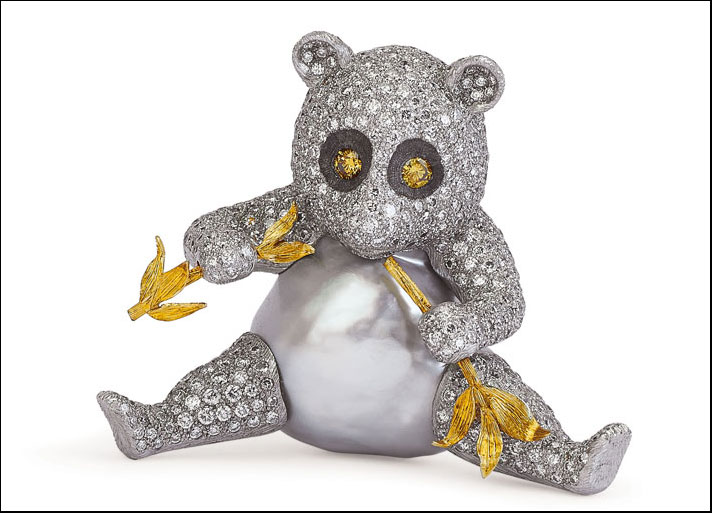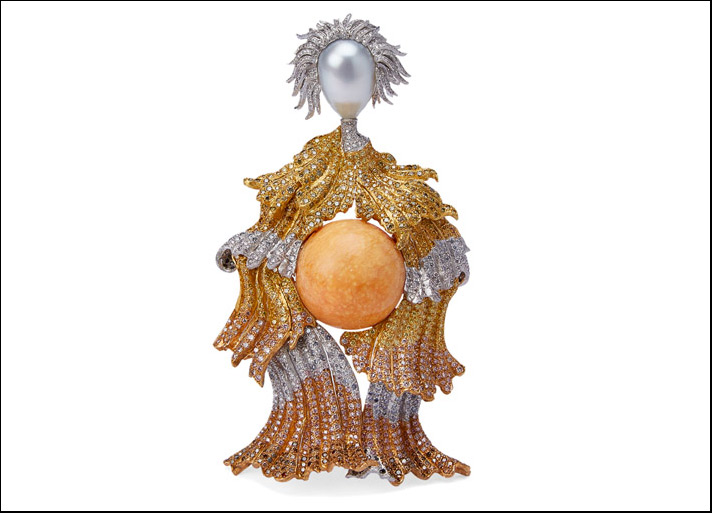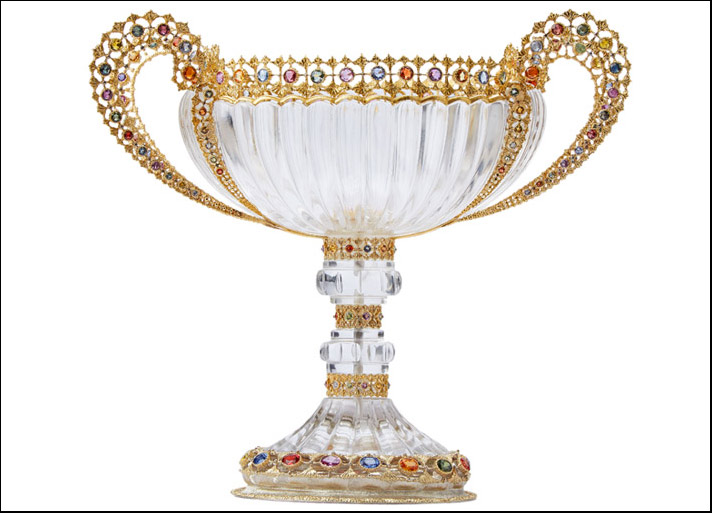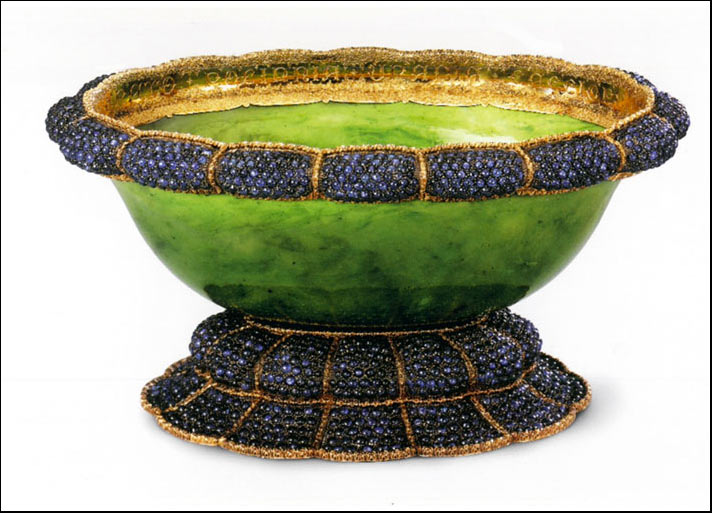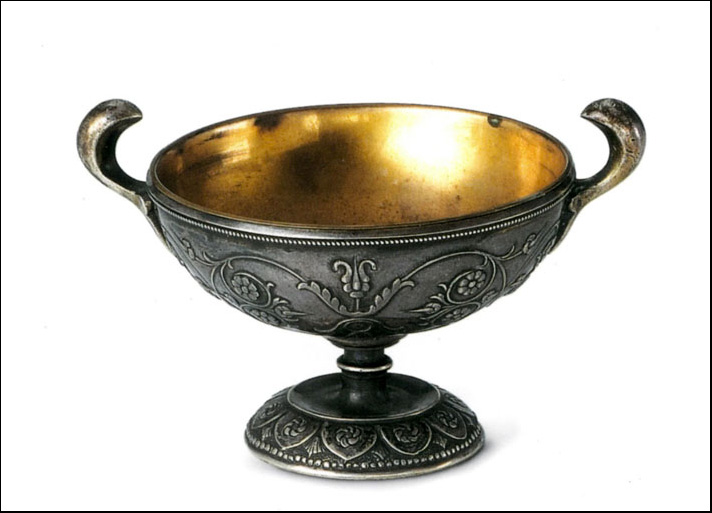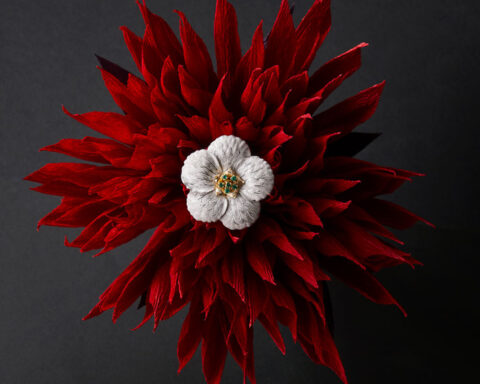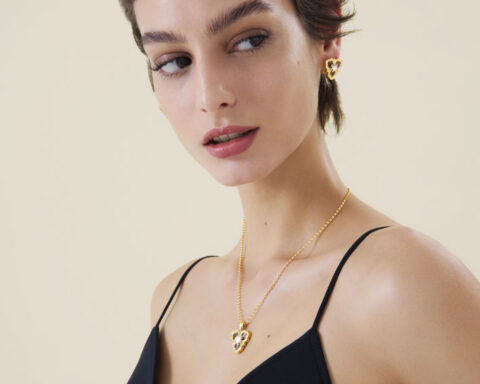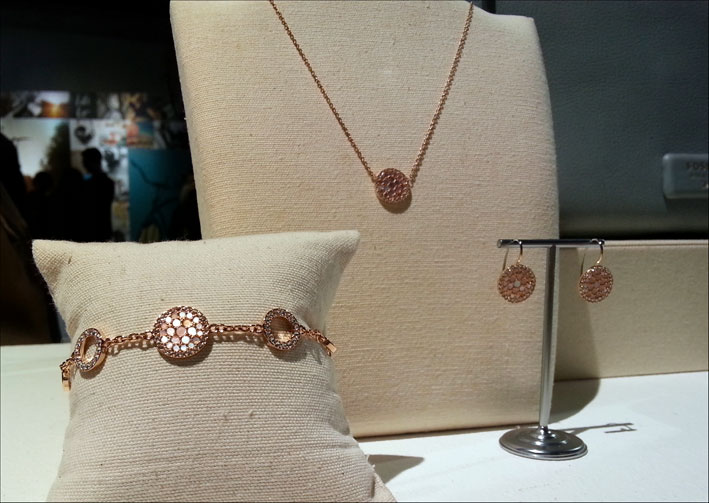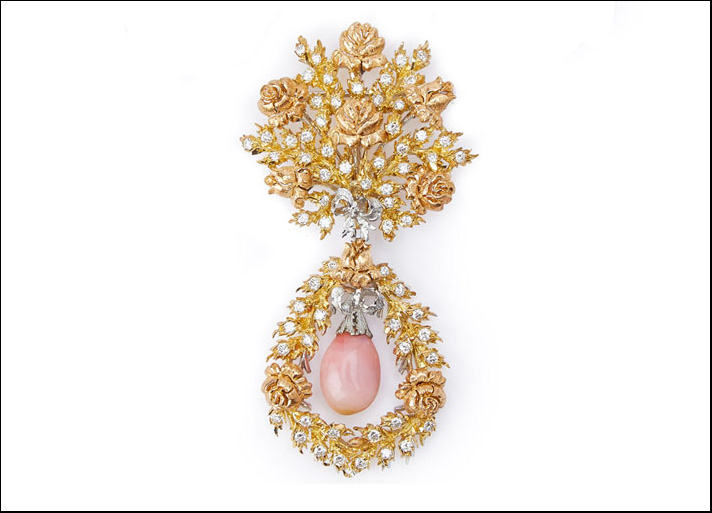«The treasures of the Buccellati Foundation. From Mario to Gianmaria: 100 years of history of the art of jewelry». Anyone passing through Florence, from December 2 to February 22, can visit an exhibition dedicated to the great maison of goldsmithing. The exhibition is at Palazzo Pitti. There are about a hundred selected works, some of which are destined to become a permanent exhibition in a room of the Museo degli Argenti in Palazzo Pitti. The choice of location could not have been more appropriate: it is goldsmithing and silversmithing with a refined technique capable of competing with the Medici pieces. Because it was Mario Buccellati who revived and enhanced the Italian goldsmith tradition, with a fretwork technique on gold sheets, like the ancient Romans, or the Renaissance chiselling of Benvenuto Cellini.
An absolute novelty. But Buccellati was also the first to introduce the weaving-engraving technique. For example, jewels with many thin and parallel lines that give a mirror effect (striped). Or crossed, which imitate the surface of linen canvas. Or with a “segrinata” texture with stripes that go in all possible directions. This innovative technique bursts into a world of jewelry dominated by French taste at the beginning of the twentieth century. It contrasts with an aesthetic inspired by masterpieces such as the rustication of Palazzo Strozzi, the ceiling of the Ducal Palace of Mantua or the lace of Burano. In short, a made in Italy that gives Buccellati enormous success, so much so that he becomes the favorite goldsmith of the poet Gabriele D’Annunzio. And in fact, the exhibition could not miss the twisted silver bracelet decorated with five lapis lazuli, contained in a case signed by d’Annunzio, a yellow gold necklace, decorated with a beryl and rubies, given to Eleonora Duse as a “precious, albeit bizarre” jewel or again, a pillbox engraved with one of the poet’s favorite expressions: “I have what I donated”.
The dynasty. From the homage to the founder of the Buccellati family, born in Ancona in 1891, here are other notable pieces signed by his son Gianmaria, the first Italian, it is worth remembering, who managed to open a shop in Place Vendôme, a Parisian temple of jewelry, when globalization was not yet talked about and in the most famous luxury streets in the world local pride triumphed. Today Gianmaria, honorary president of Buccellati holding, wanted to gather in a foundation unique pieces, including cups, vases and boxes belonging to his personal collection, many of which were designed by him. There is the decagonal-shaped Medici Casket made in 1970, which testifies to the influence of the Museo degli Argenti collection on his artistic sensibility. And the Gran Dama brooch, the Butterfly-shaped one, the Pizzo Venezia necklace. All precious objects that, instead, testify to a production in the wake of his father’s tradition, but with an imaginative, bold and very personal taste. The perfectionism has been the same throughout all these years: each object was and is cared for in the smallest details even on the back because from the perfection of a setting or a joint, the Buccellati signature can be recognized.

